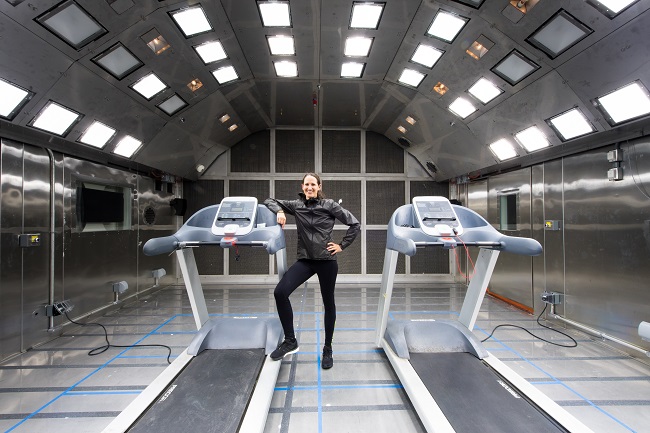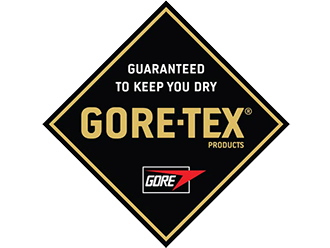
L. Gore & Associates, Inc. (Gore), known for its scientific approach to product development and ensuring products perform as promised in the intended end use, advanced its product testing capabilities with the opening of new Biophysics and Heat and Flame Protection labs. The new lab facilities allow Gore engineers to measure the properties of component materials, Gore laminates and fully constructed garments, and footwear in new, expanded and relevant conditions.
The new world-class facilities, which are located in Delaware, further Gore’s ability to develop innovative fabrics products with distinct functionality that are proven to perform in real-world conditions, before they are even brought to market.
- The Environmental Chamber can recreate between 85 to 95 percent of the environments on the earth’s surface, allowing Gore to evaluate the performance of its fabrics products in specific conditions and collect quantitative data on the protection provided and resulting comfort of the wearer.
- The new Heat and Flame Protection lab allows Gore to precisely measure and analyze the ability of its products to provide the three key elements of burn protection: flame resistance, thermal insulation, and thermal stability.
“Gore’s new world-class facilities can simulate from the most common to the most extreme environmental conditions, from a cold, damp drizzle in Scotland to the scorching heat of a California wildfire,” says Paul Canatella technical leader for Gore Fabrics Division. “By creating real-world conditions in a lab environment we can scientifically measure and analyze the impact of a product on human perception and performance in a controlled environment and then quickly apply that data to our product research and development efforts.”
Gore’s Fabrics Division brought comfort to the outdoor industry 40-years ago with the development of waterproof breathable GORE-TEX® Fabric Technology. As the leading innovator of performance apparel, Gore’s experience and expertise has resulted in such industry breakthroughs as: seam sealing with GORE-SEAM® Tape; the first waterproof breathable footwear (GORE-TEX® Bootie); addressing heat stress in the firefighting industry with GORE-TEX® Moisture Barriers; and protecting soldiers with GORE-TEX® Combat gear and GORE-TEX® PYRAD® Technology which provides flame resistant protection.
Gore conducts extensive testing in the new Biophysics lab to predict the effects of apparel, activity, and environment on the human body. This state-of-the-art facility has the capabilities to measure performance, protection, breathability and comfort for the end-user, and can recreate a wide range of environmental conditions, such as: adjusting the temperature from -50 to +50 C, relative humidity from 5 – 98 percent, wind from 0-10 m/s, and rain conditions (water and air temperature 5-25 C, rain fall rates between 0-76 mm/hr, and wind from 0-5 m/s). The data and analytics gathered during the testing process are a critical component for understanding the potential impact on the end-user in a variety of relevant environmental conditions for instance, exposure to heat and solar radiation, cold, rain, or high wind. The impact is measured through benchtop testing, sensored mannequins, and human testing in the environmental chamber.
Key components of the Biophysics lab include:
- The Environmental Chamber can simulate extreme environmental conditions, from frigid temperatures on Everest, to the blazing sun and heat of Death Valley, and Amazonian rainforest humidity. Such range of conditions are achieved through accurate control of temperature (-50C–+50C), relative humidity (5-98%), wind speed (0-10 m/s), and natural solar radiation (0-1100 W/m2) that can replicate a complete solar cycle from sun rise to sun set.
- The Rain Tower can simulate realistic rainfall rates, ranging from a light drizzle in Scotland to a downpour in the U.S. Pacific Northwest. It can simulate rainfall of up to 3 inches per hour, water and air temperatures ranging from 5° to 25° C, and wind speeds of up to 5 miles per second. This is critical in testing the impact of wind-driven rain on various aspects of water protection and comfort, such as how garment water gain affects the user perception of warmth and bulk.
Along with comfort, protection from heat and flames are tested in Gore’s new Heat and Flame Protection lab. To maximize end-users’ functional effectiveness in a wide range of heat and flame exposures, Gore analyzes thermal insulation and thermal stability in addition to “self-extinguishing” flame resistant functionality of materials.
Key capabilities of the Heat and Flame Protection lab include:
- The Cone Calorimeter enables Gore engineers to measure heat release characteristics of the fabrics used in finished garments, one of the most important variables to measure when developing garments that protect against heat and flame sources. The cone calorimeter also allows for measurement of smoke generated from a fire event involving these products.
- Stored Thermal Energy Tester evaluates time to burn in low heat flux scenarios where a firefighter could experience sweat burns from standing outside the fire ground. This allows complimentary insight to the additional reduction in protection in a flash-over fire scenario when a room or area is suddenly engulfed in flames from floor to ceiling.
- Pyrolysis Combustion Flow Calorimeter (PCFC) / Micro Combustion Calorimeter (MCC) allows Gore to rapidly characterize heat release and fire-preventing char generation in the raw materials used to make our products.
“The advanced capabilities of the Heat and Flame Protection lab allow us to very quickly assess the performance of materials and rapidly generate and develop understanding and new technologies that enable us to better protect those that protect and serve all of us,” said Kip Sturgill, global technical leader for Gore’s protective fabrics business unit.
INFO: GORE-TEX®


